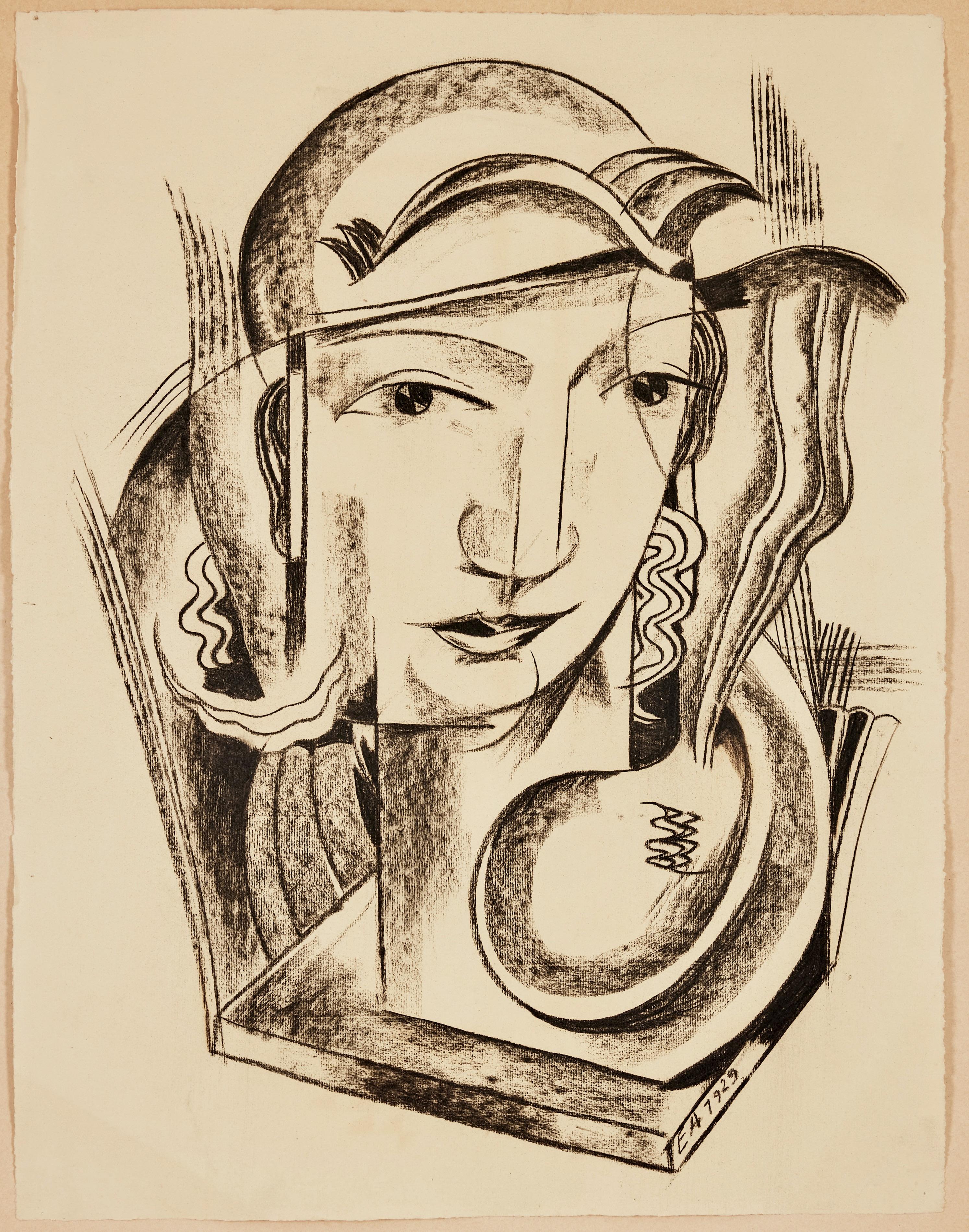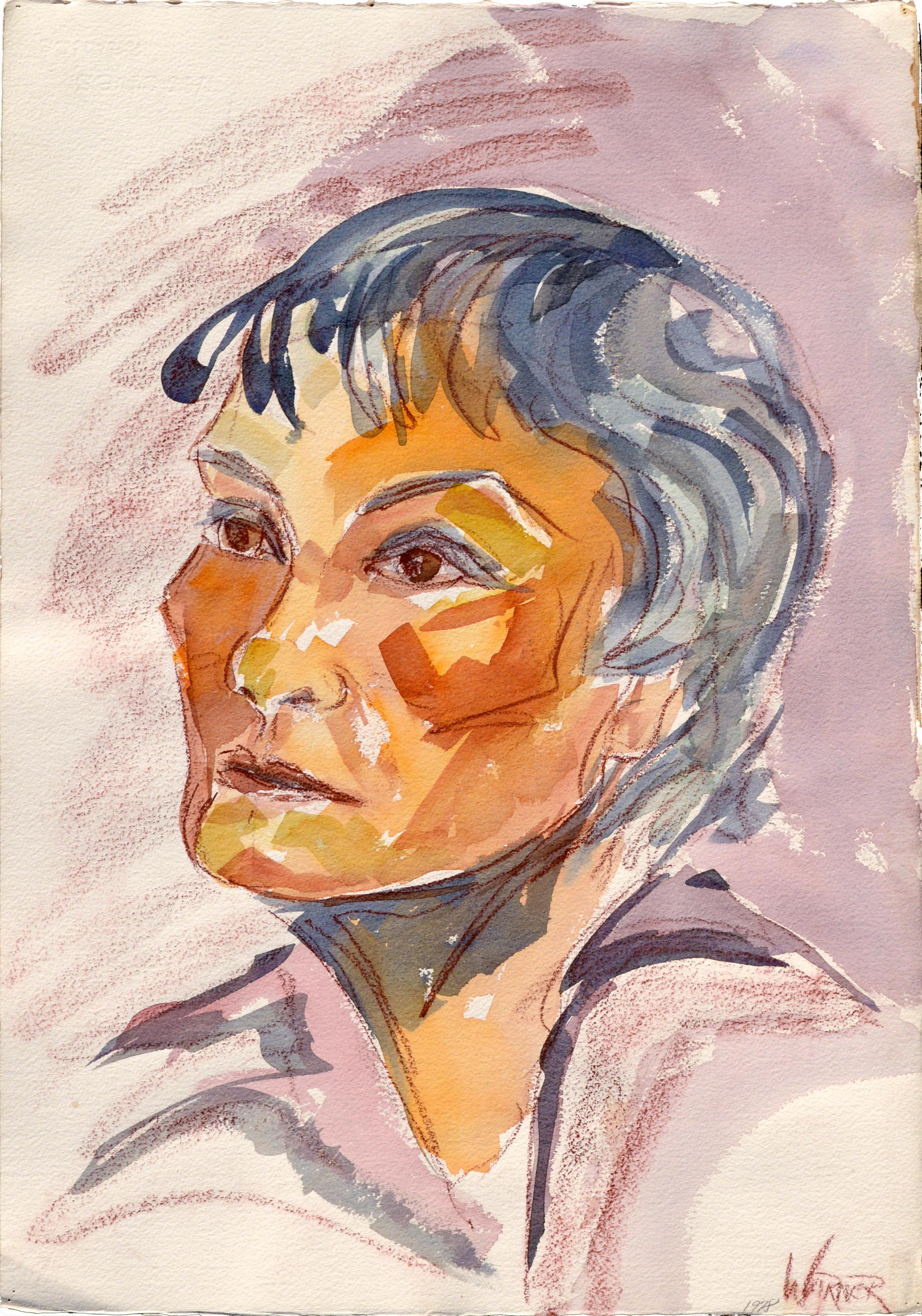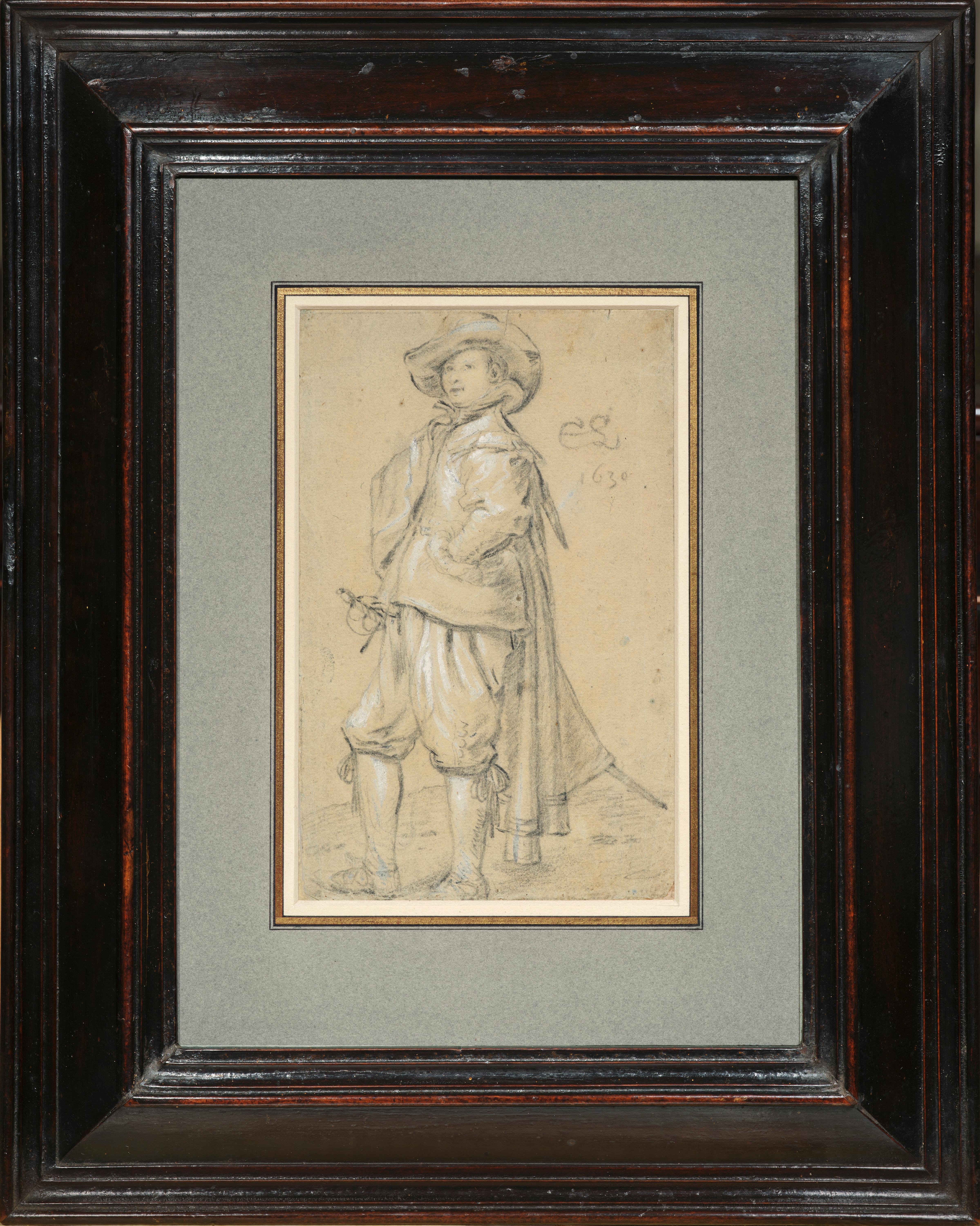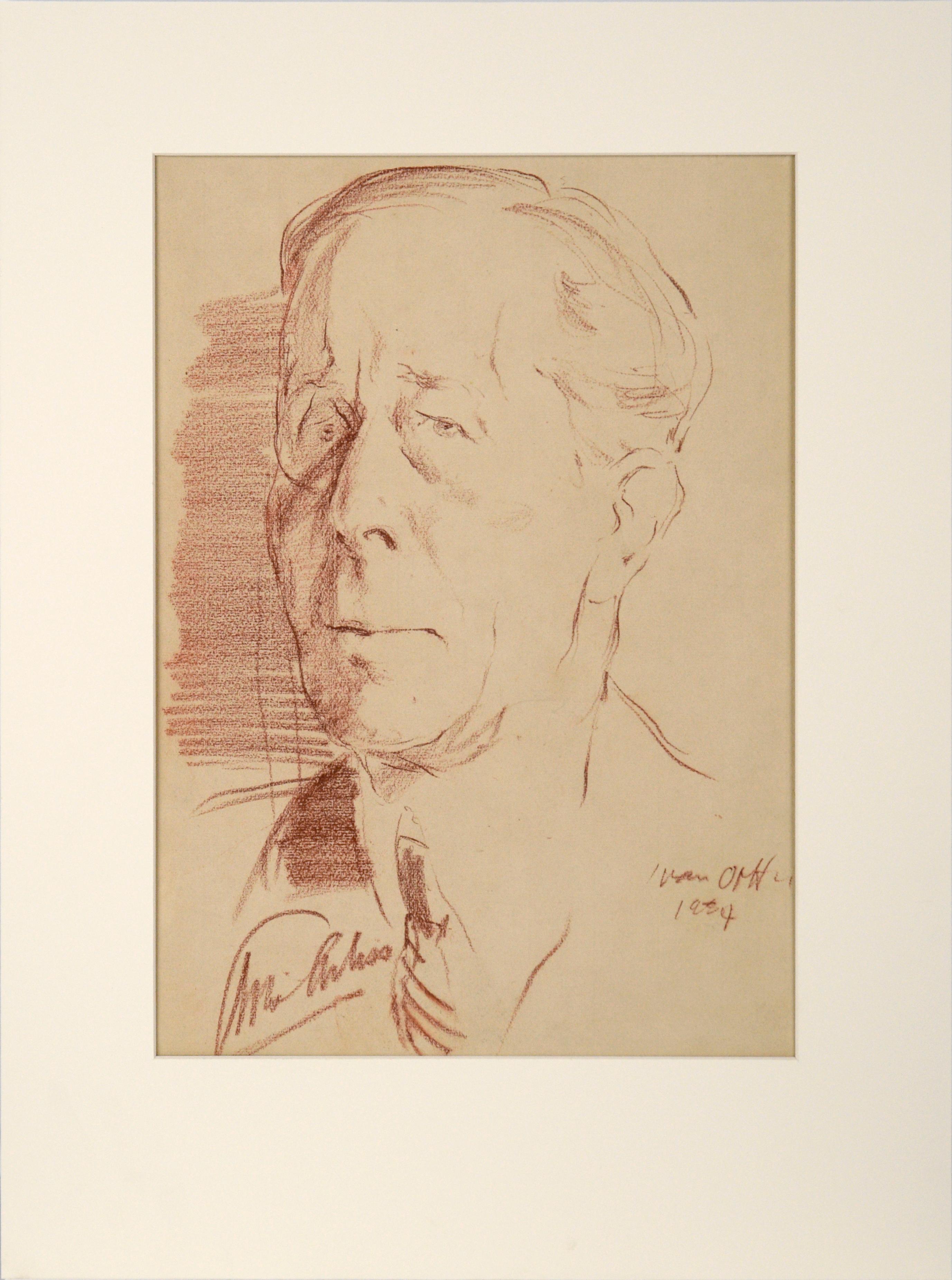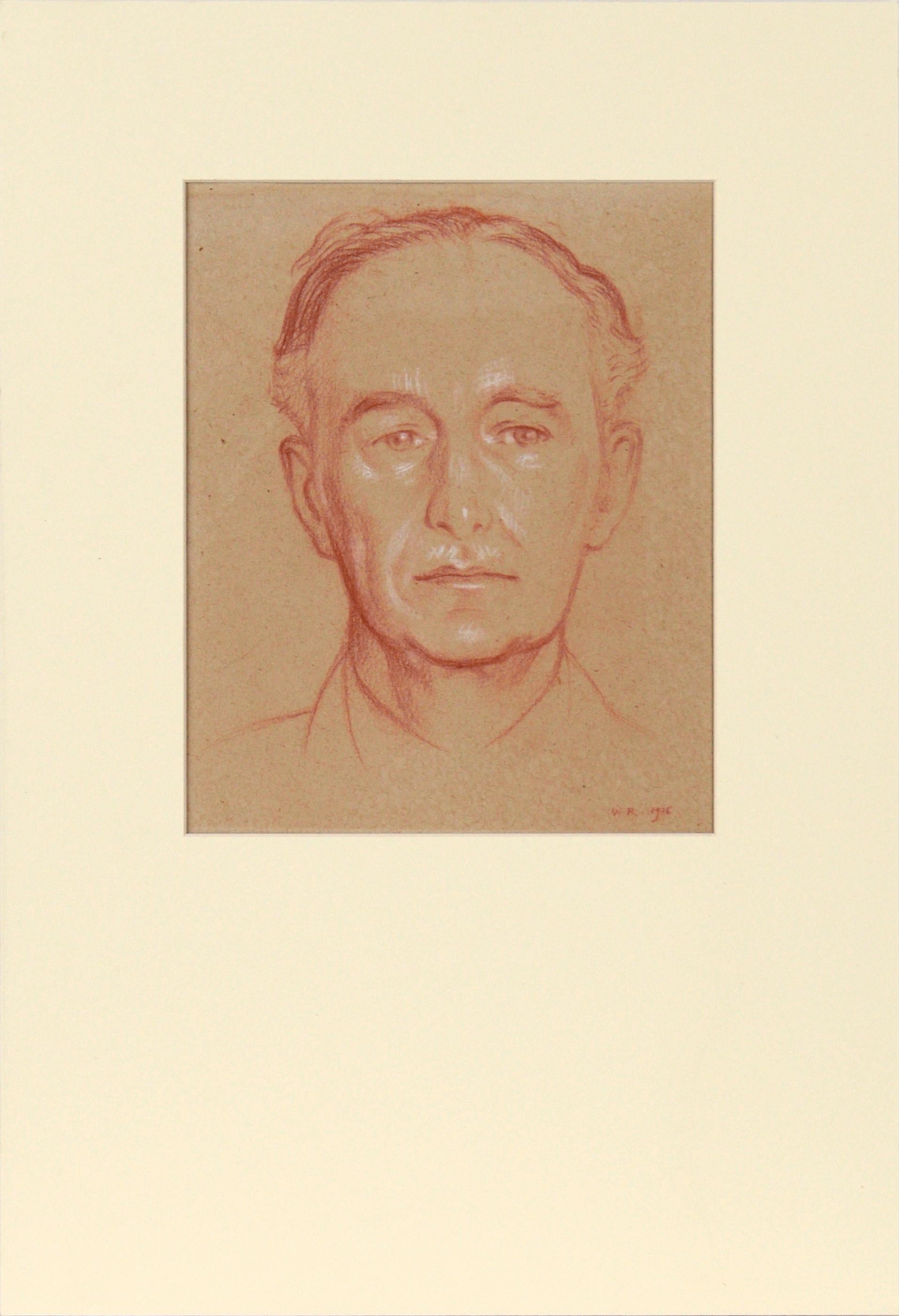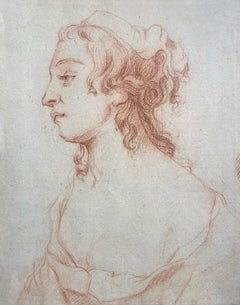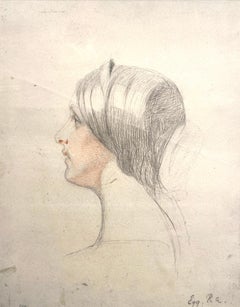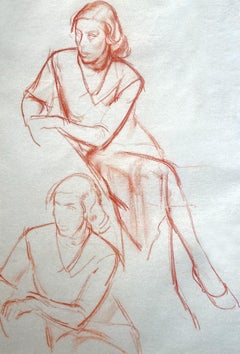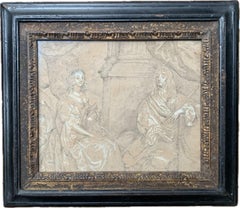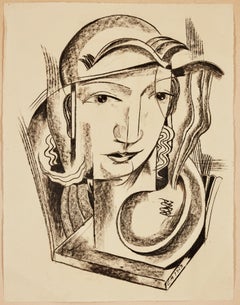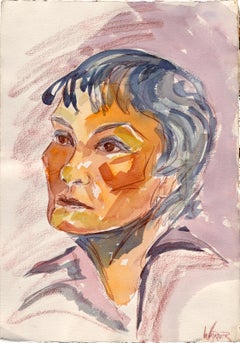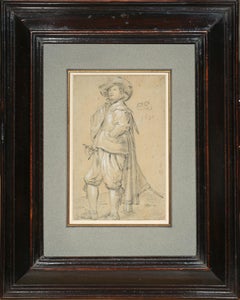Items Similar to James, Duke of York, (later James II) and Anne Hyde, Duchess of York
Want more images or videos?
Request additional images or videos from the seller
1 of 2
Sir Peter Lely ( After )James, Duke of York, (later James II) and Anne Hyde, Duchess of York
About the Item
After Sir Peter Lely, Late 17th Century
(1618–1680)
James, Duke of York, (later James II) and Anne Hyde, Duchess of York
Chalk on paper
Image size: 8¼ x 10¼ inches
Born in Soest in 1618, Lely trained in Haarlem before travelling to London in 1634. He had painted the children of Charles I in 1647, whilst the king was in custody during the Civil War. After the return of Charles II and the restoration of the monarchy, Lely was appointed Principal Painter to the king and
enjoyed a highly successful career at court, producing portraits of the leading figures of the day.
Lely produced a number of likenesses of the king’s brother, James Duke of York, and his first wife,
Anne Hyde, over several years. Commissioned by the Earl of Clarendon, this portrait was most probably painted after the marriage in 1660. This sketch, however, matches the composition of a
slightly later group portrait of the couple by Lely, which is held in the collection at the Petworth House.
Peter Lely would make a number of studies when preparing a composition. Indeed, according to Oliver
Millar, he was ‘a more prolific draughtsman, and made more preparatory studies in the course of his practice, than any other professional portrait-painter in London’. He clearly appreciated the value of drawings, whether as a commodity in themselves, or as a part of the artistic process.
Literature:
- Millar, O. Sir Peter Lely 1618-80, exhibition catalogue, 17th November 1978 – 18th March 1979.
- Creator:Sir Peter Lely ( After ) (1618 - 1680)
- Dimensions:Height: 8.25 in (20.96 cm)Width: 10.25 in (26.04 cm)
- More Editions & Sizes:1 of 1Price: $6,503
- Medium:
- Period:
- Condition:
- Gallery Location:London, GB
- Reference Number:1stDibs: LU5244292551
About the Seller
5.0
Vetted Professional Seller
Every seller passes strict standards for authenticity and reliability
Established in 2007
1stDibs seller since 2014
80 sales on 1stDibs
Typical response time: 3 hours
- ShippingRetrieving quote...Shipping from: London, United Kingdom
- Return Policy
Authenticity Guarantee
In the unlikely event there’s an issue with an item’s authenticity, contact us within 1 year for a full refund. DetailsMoney-Back Guarantee
If your item is not as described, is damaged in transit, or does not arrive, contact us within 7 days for a full refund. Details24-Hour Cancellation
You have a 24-hour grace period in which to reconsider your purchase, with no questions asked.Vetted Professional Sellers
Our world-class sellers must adhere to strict standards for service and quality, maintaining the integrity of our listings.Price-Match Guarantee
If you find that a seller listed the same item for a lower price elsewhere, we’ll match it.Trusted Global Delivery
Our best-in-class carrier network provides specialized shipping options worldwide, including custom delivery.More From This Seller
View AllPortrait of a Young Woman
By Sir Peter Lely
Located in London, GB
Red chalk on paper
Image size: 7 1/2 x 9 1/4 inches (19 x 23.5 cm)
Contemporary frame
An enigmatic portrait of a young woman after Sir Peter Lely's drawing, currently shown in the B...
Category
Mid-17th Century Victorian Portrait Drawings and Watercolors
Materials
Paper, Chalk
Portrait Study of a Young Girl, Signed 19th Century Victorian Sketch
By Augustus Leopold Egg
Located in London, GB
Pencil and coloured chalk on paper, signed bottom right
Image size: 9 3/4 x 7 3/4 inches (3.75 x 3 cm)
Mounted and framed
Provenance
Studio sale, Christies 18th May 1863
The Artis...
Category
Mid-19th Century Portrait Drawings and Watercolors
Materials
Paper, Chalk, Pencil
Studies of a Woman Sitting, Red Chalk Drawing, Modern British Artist, Framed
By James Stroudley
Located in London, GB
Red chalk on paper
Image size: 21 x 14 1/2 inches (54 x 37 cm)
Gilt frame
James Stroudley
Stroudley was born in London on 17 June 1906, the son of James Stroudley, showcard and ticket writer. He studied at Clapham School of Art (1923-27) and then at the Royal College of Art (1927-30), where his teachers included Alan Gwynne-Jones and William Rothenstein. As a recipient of the first Abbey Scholarship he was able to spend three years in Italy from 1930, where he absorbed the influences of Giotto and Piero della Francesca, and produced one of the last wholly satisfying decorative cycles by a Rome Scholar of the period. From 1934, he exhibited at the Royal Society of British Artists, and was elected to its membership in the following year.
From the Second World War – in which he worked with the Camouflage Unit – Stroudley taught at St Martin’s School of Art and was a visiting lecturer at the Royal Academy Schools. Though he continued to live in London, his later work, exhibited at the Royal Academy from 1955, indicated regular painting trips to Kent and Sussex coasts. However, much of his later work was abstract. In 1971, his former student, Peter Coker, paid homage to Stroudley by including his work in the exhibition ‘Pupil & Masters’, held at Westgate House, Long Melford, Suffolk.
Stroudley married three times, and his wives included the fashion artist to the Sun newspaper...
Category
20th Century Modern Portrait Drawings and Watercolors
Materials
Paper, Chalk
Anne Hyde, Duchess of York; King James II
By Sir Peter Lely
Located in London, GB
After Sir Peter Lely
1618 - 1680
Anne Hyde, Duchess of York; King James II
Pencil, ink and white chalk on paper,
Image size: 10 x 8 inches (25.5 x 20.5 cm)
Original frame
This work,...
Category
17th Century Old Masters Portrait Drawings and Watercolors
Materials
Paper, Chalk, Ink, Pencil
Bernard, Self Portrait
Located in London, GB
English School
Bernard, Self Portrait
1950s
Pencil and sepia chalk on paper
Image size: 9 1/2 x 13 1/2 inches (24 x 34.3 cm)
Handmade contemporary frame
This imaginative self-portra...
Category
1950s Portrait Drawings and Watercolors
Materials
Paper, Chalk, Pencil
Portrait of a Lady, 19th Century French School Chalk on Paper
Located in London, GB
French School
19th Century
Portrait of a Lady
Coloured chalks on paper
Image size: 10 x 7 inches
Contemporary gilt frame
Category
19th Century Portrait Drawings and Watercolors
Materials
Paper, Chalk
You May Also Like
Hermes 1929
Located in Stockholm, SE
An interesting and highly decorative chalk drawing by Edvard Andersson, 1929. Drawn on a quite large scale. Signed and dated EA, 1929. A tergo written "Hermes".
The drawing is exec...
Category
1920s Cubist Abstract Drawings and Watercolors
Materials
Paper, Chalk
Portrait of a Woman
By Doris Warner
Located in Soquel, CA
Vintage watercolor portrait by Doris Ann Warner (American, 1925-2010). Signed "Warner" in the lower right corner. Dated "1978". Unframed.
Doris Ann Warner began as an Abstract Expre...
Category
1970s American Impressionist Portrait Drawings and Watercolors
Materials
Paper, Watercolor, Conté
Female Portrait Sketch #2
By Ben Fenske
Located in Sag Harbor, NY
A colorful sketch of a female bust, in the style of contemporary academic realism.
Artist Bio
Ben Fenske (b. 1978) although a native of Minnesota, a...
Category
21st Century and Contemporary Academic Portrait Drawings and Watercolors
Materials
Paper, Conté, Crayon
$520 Sale Price
35% Off
Young Man with a Sword, a Fist on his Hip, a drawing by Cornelis Saftleven
Located in PARIS, FR
Black chalk and white highlights on paper (originally washed in blue)
Monogrammed and dated 1630 on the right
This drawing, executed in black chalk and enhanced with white brushwor...
Category
1630s Old Masters Portrait Drawings and Watercolors
Materials
Paper, Chalk
Portrait of George Arliss in Conte Crayon on Cardstock 1934
Located in Soquel, CA
Stately portrait of George Arliss by Ivan Opffer (Danish, 1897-1980). Mr. Arliss is depicted wearing his signature monocle, looking directly at the viewer. Although this piece appears to be done rapidly, there is a clear confidence in Opffer's work - he was an accomplished portrait artist - and the resemblance to the subject is unmistakable. George Arliss (born Augustus George Andrews; 10 April 1868 – 5 February 1946) was an English actor, author, playwright, and filmmaker who found success in the United States. He was the first British actor to win an Academy Award – which he won for his performance as Victorian-era British prime minister Benjamin Disraeli in Disraeli (1929) – as well as the earliest-born actor to win the honour. He specialized in successful biopics, such as Disraeli, Voltaire (1933), and Cardinal Richelieu (1935), as well as light comedies, which included The Millionaire (1931) and A Successful Calamity (1932).
Signed and dated "Ivan Opffer 1934" in the lower right.
Titled "Mr. Arliss" in the lower left.
Presented in a new off-white mat with foamcore backing.
Mat size: 22"H x 16"W
Art size: 17.5"H x 12"W
Ivan Opffer (Danish, 1897-1980) was born in Nyborg, Denmark, on June 4, 1897, to a family of Danish scholars and journalists. His brother was Emil Opffer, a Danish merchant seaman and journalist who was known for his relationship with American writer Hart Crane.
Ivan was raised in Mexico City and New York, where his anarchist father was the editor of a radical Danish-language newspaper. His involvement in painting and drawing began at an early age. At a summer workshop, he met and studied drawing with Winslow Homer, then went on to study at the National Academy of Design and the Art Students League of New York.
When the US entered World War I, Opffer was one of the members of the American Army Camouflage Corps, headed by Homer Saint-Gaudens (whose mother was a relative of Winslow Homer), the son of Augustus Saint-Gaudens. As a camoufleur, Opffer served with other artists and architects, some of whom became well-known, including Barry Faulkner, Sherry Edmundson Fry, Kimon Nicolaides, Robert Lawson, Abraham Rattner, Kerr Eby, and others.
It was this same unit, while still in training in at Camp American University in Washington DC, that launched a camp newspaper called The Camoufleur. Only three issues were published before the unit’s deployment to France in late 1917. In the October 31 issue, a satirical portrait by Opffer of Homer Saint-Gaudens (titled “Our Boss”) was published on page 5.
After the war, Opffer returned to New York, where he became known for his caricatures of leading Modern writers, among them James Joyce, Edgar Lee Masters, Siegfried Sassoon, George Bernard Shaw, Carl Sandburg, G.K. Chesterton, and Thomas Mann.
In the years between the wars, Opffer married Betty à Beckett Chomley, and settled in Paris, where he was a student at the Academie Julliard. He also lived in London and Copenhagen, where his drawings were frequently published in newspapers and magazines. With the outbreak of World War II, he and his family returned to New York and lived in Greenwich Village.
Among his friends in that era were William Butler Yeats, F. Scott and Zelda Fitzgerald...
Category
1930s American Impressionist Portrait Drawings and Watercolors
Materials
Conté, Postcard, Illustration Board
Portrait of Leopold Myers by Sir William Rothenstein
By Sir William Rothenstein
Located in Soquel, CA
Stately sanguine portrait of Leopold Hamilton Myers (Novelist) by Sir William Rothenstein (English, 1872-1945). Captured in Rothenstein's characteristic style, Myers looks directly at the viewer with a neutral expression. Although this portrait uses only two colors and minimal shading, the likeness of Myers is incredibly well captured. Leo (Leopold) Hamilton Myers (1881 – 1944) was a British novelist. Numerous examples like this one of the writer are in the Tate Museum.
Initialed and dated in the lower right corner ("W.R. 1936")
Inscription on verso indicating materials, subject, and artist.
Presented in a new cream colored mat with foamcore backing.
Mat size: 18"H x 12"W
Paper size: 15.25"H x 10.75"W
William Rothenstein (English, 1872-1945) was born into a German-Jewish family in Bradford, West Yorkshire. His father, Moritz, emigrated from Germany in 1859 to work in Bradford's burgeoning textile industry. Soon afterwards he married Bertha Dux, and they had six children, of which William was the fifth. Rothenstein was knighted in 1931.
Rothenstein left Bradford Grammar School at the age of sixteen to study at the Slade School of Art*, London (1888-1893), where he was taught by Alphonse Legros, and the Académie Julian* in Paris (1889-1893), where he met and was encouraged by James McNeill Whistler, Edgar Degas and Henri Toulouse-Lautrec. Whilst in Paris he also befriended the Anglo-Australian artist Charles Conder, with whom he shared a studio in Montmartre. In 1893 he returned to England to work on "Oxford Characters" a series of lithographic* portraits.
In Oxford he met and became a close friend of the caricaturist* and parodist Max Beerbohm, who later immortalised him in the short story Enoch Soames (1919). During the 1890s Rothenstein exhibited with the New English Art Club* and, in 1900, won a silver medal for his painting The Doll's House at the Exposition Universelle. In 1898 he co-founded the Carfax Gallery in St. James' Piccadilly with John Fothergill. During its early years the gallery was closely associated with such artists as Charles Conder, Philip Wilson Steer, Charles Ricketts and Augustus John. It also exhibited the work of Auguste Rodin, whose growing reputation in England owed much to Rothenstein's friendship and missionary zeal. The gallery was later the home for all three exhibitions of The Camden Town Group*, led by Rothenstein's friend and close contemporary Walter Sickert.
Rothenstein is best known for his portrait drawings of famous individuals and for being an official war artist in both World War I and World War II. He was also a member of the International Society of Sculptors, Painters & Gravers. The style and subject of his paintings varies, though certain themes reappear, in particular an interest in 'weighty' or 'essential' subjects tackled in a restrained manner. Good examples include Parting at Morning (1891), Mother and Child (1903) and Jews Mourning at a Synagogue (1907) - all of which are owned by the Tate Gallery. The National Portrait Gallery owns over two hundred of his portraits. In 2011 the BBC and the Public Catalogue Foundation began cataloguing all of his paintings in public ownership online.
Between 1902 and 1912 Rothenstein lived in Hampstead, London, where his social circle included such names as H.G.Wells, Joseph Conrad and the artist Augustus John. Amongst the young artists to visit Rothenstein in Hampstead were Mark Gertler...
Category
1930s Realist Portrait Drawings and Watercolors
Materials
Conté, Handmade Paper
Recently Viewed
View AllMore Ways To Browse
James Houser
James Brown Painter
Anne London
Portrait Of Charles I
Antique Duchess
Portrait Duchess
Le Couple
Portrait James Ii
17th Century Sketches
The Duke And Duchess
18th Century Portrait King
17th And 18th Century Portraits
Oliver Charles
King James I
King Charles Ii
18th Century Portraits Children
Peter Oliver
Sir Peter Lely
